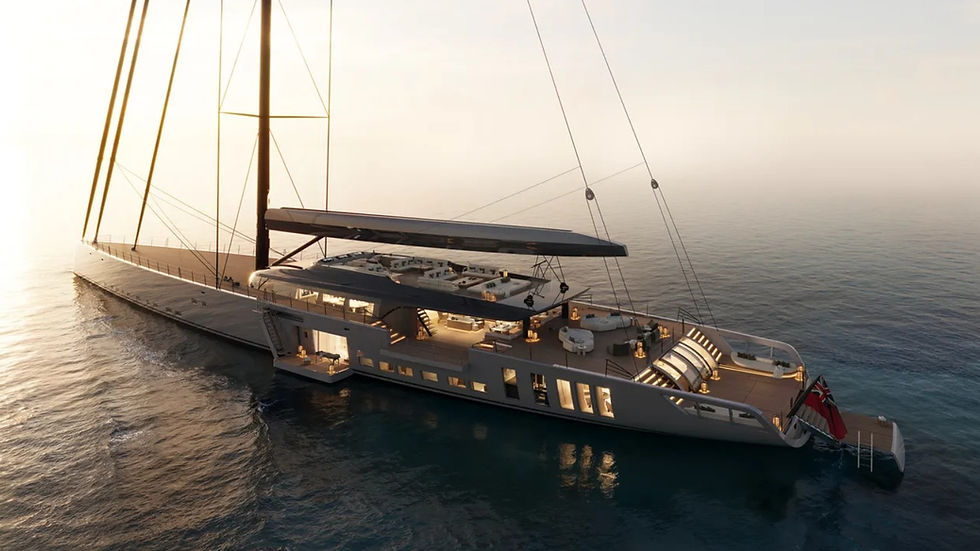The World’s First Autonomous Ship Completes 240 km Voyage and Docks Itself
- Scott Way

- Jan 26, 2022
- 3 min read
Updated: Jan 26, 2022
By: Scott Way & Richard Crowder

It's no secret consumer products are growing in autonomy. Teslas literally drive themselves, and everything from airplanes to transport trucks are increasingly designed around autonomous software that makes decisions without user input.
As far as the boating world is concerned, autonomy is accelerating in things like 'intelligent' docking systems, 'smart' sensors that regulate vessel conditions (trim, steering, positioning, etc), and electronics (GPS routing, current/tide corrections). These advancements make boating a safer and more enjoyable experience -- and that's always the goal. For captains, operating a boat is increasingly about monitoring the function of electronics rather than manually performing those same functions (adjusting trim, accounting for current/drift, re-routing GPS) . To put it another way, the days of using a gyroscopic compass and a divider are long gone. And that's not a bad thing. Autonomous boating hit a milestone this week when a fully autonomous commercial ferry navigated 149 miles (240 km) along Japan's Seto Inland Sea and then docked itself.
The electronics used to outfit the ship were developed by Mitsubishi Shipbuilding, a subgroup of the Nippon Foundation, a non-profit organization that issues grants for the development of marine technology.
The maiden voyage wasn't on a small scale, either. The ship was the Soleil, a 728-foot (222 m) ferry designed for carrying vehicles. It also traveled at a steady clip of 26 knots (30 mph). For some perspective, 728-feet is the same length as the world's largest yacht (although, commercial ships are often larger than recreational boats with the largest commercial being the 1504-foot Seawise Giant supertanker). It's a testament to electronic advancement that they both navigated and docked a vessel weighing 15,000 tons without human input. According to Mitsuyuki Unno, Executive Director of the Nippon Foundation in a company statement, “I hope this will lead to further development toward practical use. There are still many issues to be resolved, however, and I believe today’s results will be a guide toward the creation of international rules for fully autonomous vessels."
Despite the success of the Soleil, autonomous boating is still in its infancy. Progress hinders not only on safety and reliability, but also on international regulations. Soleil still carried a crew of 7, and most international marine laws dictate that a pilot boat and pilot crew are mandatory for any large ship entering a commercial harbour. Another consideration is the cost -- whether developing and implementing autonomous technology outweighs the costs associated with maintaining a captain and crew. Even with full autonomy, a hands-on captain and deck crew will still be required, at least in the short term, to override electronic faults or unforeseen errors (I.e., the superyacht ’GO’ crash in St. Maartens last year) as well as comply with international maritime laws.
The rapid growth of similar industries, namely the automotive sector, will be what drives this movement forward. Rolls Royce partnered with Intel to develop autonomous cargo vessels that don't require humans onboard and plan to have their fleets available by 2025. IBM tried to cross the Atlantic in 2019 and again in 2021 with the autonomous ship Mayflower, and would have succeeded save for a minor mechanical issue. Volvo Penta has almost reached an autonomous docking system for recreational boats. Even more, recreational boats are increasingly come from manufacturers with autonomous-capable electronics like bow thrusters, docking joysticks, and navigational systems. With time, those are likely to become fully autonomous standard features.
At the current rate of change, not to mention the burgeoning transition to electric power, full autonomy is likely to reach recreational boats sooner rather than later. And that's exciting, provided it's safe. Setting a course and sitting back until your boat docks itself is not a bad day on the water. If it can be done with a 728-foot commercial ferry, it can definitely be done on a runabout.






















Comments